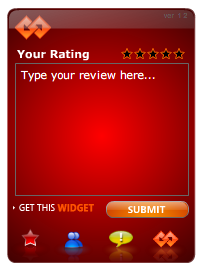Widgets to become more interactive

Distributing content via widgets has been a key element of the growing social web. Fueled by the explosion of blogs, social networking profiles, and start pages -- it's now common practice for companies to take a more de-centralized approach to their content, so that their users can also become distributors. In return it's hoped that this will drive traffic back to the originating site. For example, where would YouTube be, had it not offered its Flash-based video player as an embeddable widget?
However, up until now, most widgets utilize a 'broadcast' model: content is pushed out to users (one way), but, generally, they can't send content back (two way). This, says Richard MacManus, is set to change, as widgets become more interactive.
MacManus gives the example of RateItAll's blog feedback widget:
RateItAll, a social network based around online reviews and opinions, has released a new distributed rating widget. It enables users to not only view (read) a widget, but to interact with it and enter data (write). The initial application for RateItAll's read/write widget is a blog feedback badge, which is the first of many distributed rating applications coming from RateItAll.

Of course, interactivity needn't end at publishing content (such as reviews) but could also involve making transactions. For example, MacManus suggests that eBay's widget could be extended to allow auctions to take place outside of eBay's site.
It's ironic that widgets are only now becoming more interactive, as in many respects we all consider them to be a symbol of so-called web 2.0 or the read/write web -- and yet their one-way-ness is very 1.0.
Are we about to see the a trend towards widgets 2.0?